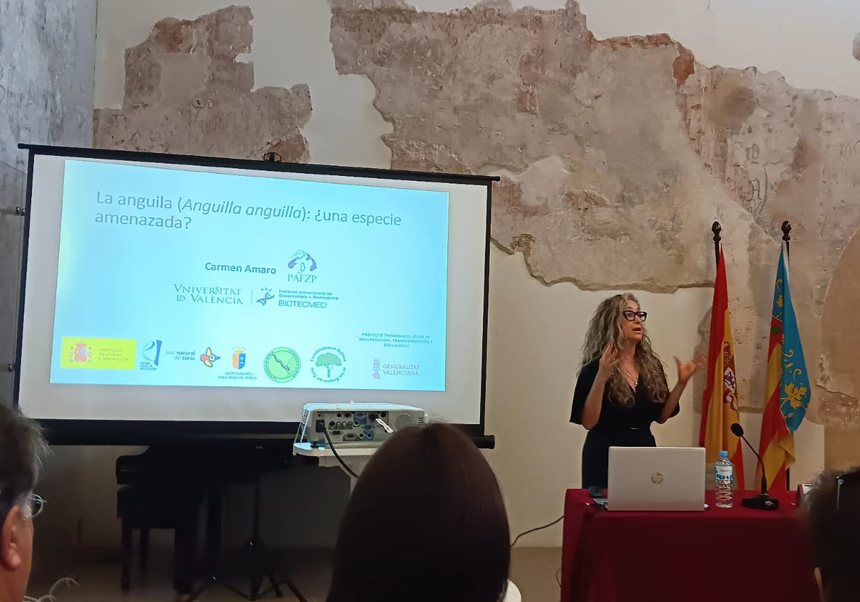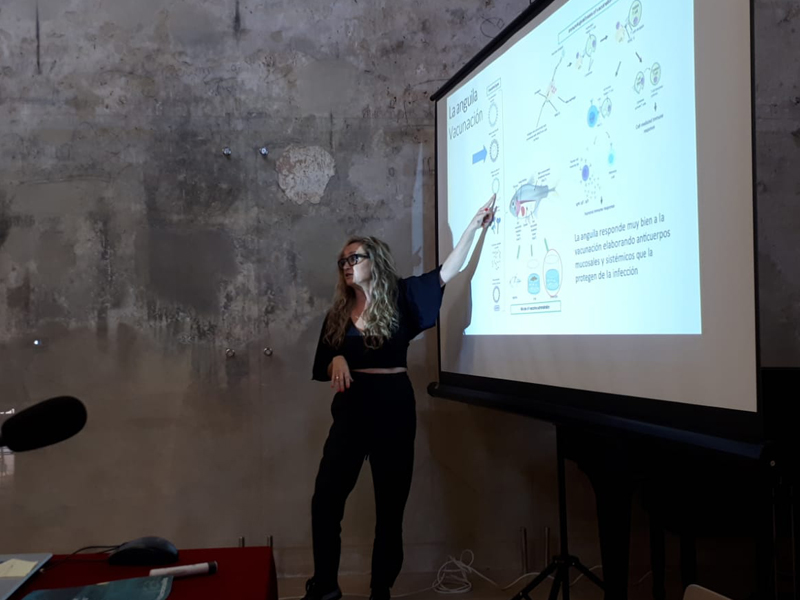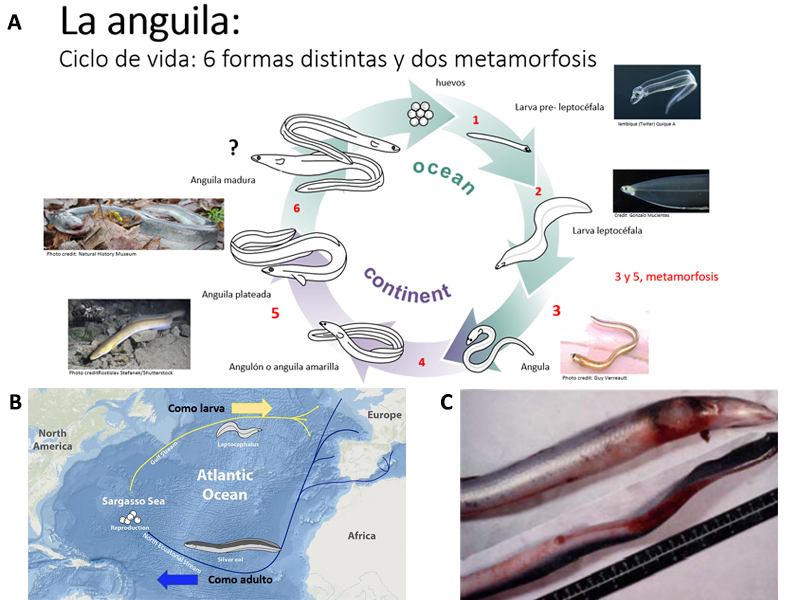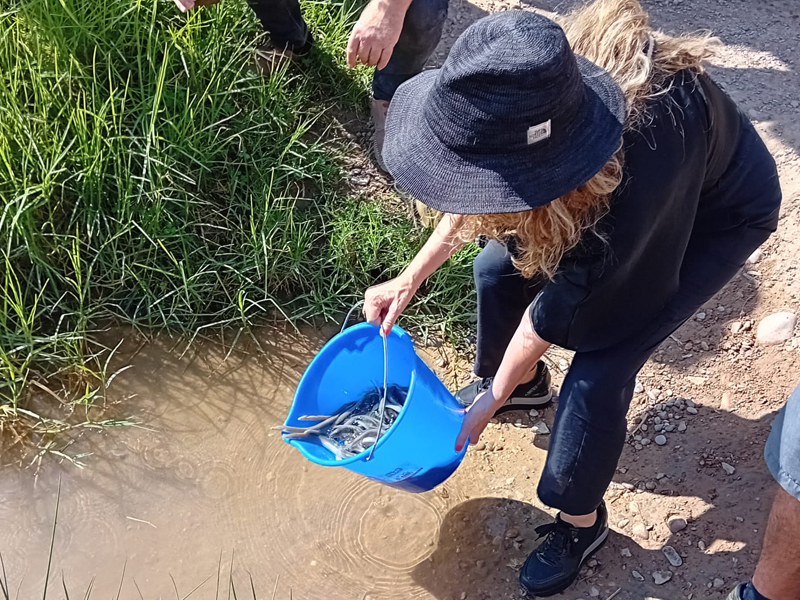
Last 4th of October, the release of eels in the river Turia, to Riba-roja, took place due to the IV Jornada "The eel in the sea, the elver in the Turia" held in the Castell de Riba-roja. And of course, our dear Carmen Amaro, PI of our group, participated, giving a talk about the biology of the eel (Anguilla anguilla) and, of course, helping with the release of these eels in the river.
The platform "The eel in the sea - the elver in the Turia" is an entity that has as a fundamental pillar the conservation of this threatened species and that inhabits, also, in our lands. For this reason, the IV Conference "The eel in the sea, the elver in the Turia" was held on the 4th of October in the Castell de Riba-roja, a meeting framed in the Seasonal Universities programme in collaboration with the University of Valencia, the Riba-roja Town Council, the Provincial Council of Valencia and Caixa Popular.
At this meeting the advances within the platform were presented, but Carmen Amaro also gave a presentation explaining the fantastic biology of the eel. Her talk, entitled "The eel (Anguilla anguilla). An endangered species?" considered both the fascinating biology of the eel itself and the natural living environment of this species, highlighting that human action, together with climate change, is degrading its home and, therefore, endangering its existence and natural maintenance.

Briefly, the eel is a teleost fish of the order anguiliform. It is a migratory animal, known to hatch in the Sargasso Sea, although the exact reproductive process is unknown. The larvae, once born, move towards less warm seas to enter land waters, such as rivers and lagoons, like our Albufera de València. In these fresh waters they will grow (first as elvers, and later as glass eels) until they become eels of more than 35 cm in length. After a few years, approximately 20 years, the eels will return to the sea where they were born. During this journey, they will develop sexually and, when they reach their destination, the Sargasso Sea, they will reproduce and, romantically, eventually die.
For our group, eels are very important, since they are, together with other fish such as tilapia, the target of infection of our study bacterium: Vibrio vulnificus.

Finally, the meeting ended with the release into the river Turia of no less than 2,011 eels! This release of the animals will happen at the expense of the users of the Association of families of people with mental illness, AFEMPES, and, of course, of our PI Carmen Amaro.

In short, we all have to be aware that our actions have consequences on the environment, and can end up destroying the homes of many species of animals, and perhaps in the not too distant future, our homes as well. Therefore, acts like this help to improve our environment, to get closer to non-human animal biology, to respect the other inhabitants of our planet and, above all, to show the appreciation we have for natural life.










